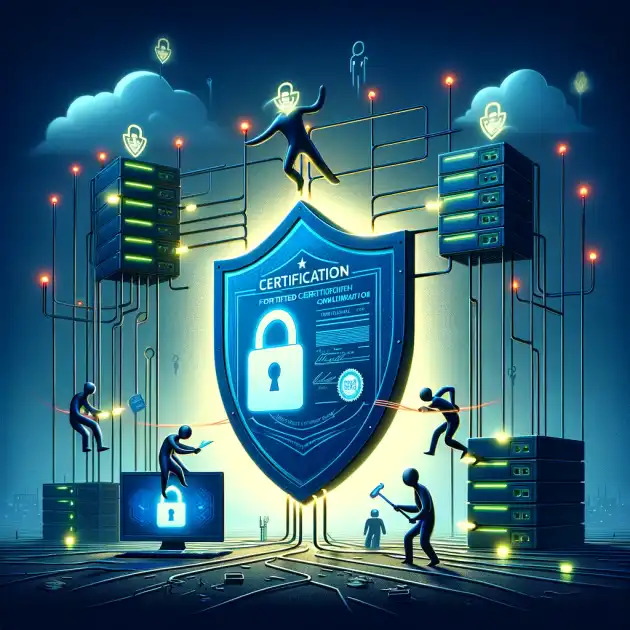In an era where digital security is paramount, one technique stands out for its ability to fortify the defenses of online communications against man-in-the-middle (MITM) attacks: certification pinning. This method, although not new, continues to be a critical component in the security protocols of applications and websites. In this blog post, we'll dive into what certification pinning is, how it works, and why it's a vital strategy in securing online data transmission.
What is Certification Pinning?
Certification pinning, also known as SSL pinning, is a security measure that allows applications to specify which certificate authorities (CAs) have issued valid certificates for their services, rather than accepting any certificate signed by a trusted CA. This process involves hardcoding the certificate or the public key of the certificate directly into the application. By doing so, the application can reject any certificates not matching the pinned certificate, even if they are signed by a trusted CA.
How Does Certification Pinning Work?
The essence of certification pinning lies in its ability to create a direct trust relationship between an application and its server. Here's a simplified step-by-step on how it works:
- Initialization: The developer embeds the expected server certificate or its public key hash into the application code.
- Connection: When the application makes a secure connection to the server, it retrieves the server's SSL certificate.
- Verification: The application then compares the public key in the received certificate against the pre-pinned public key or certificate.
- Validation: If the keys match, the connection is considered secure, and data transmission proceeds. If there's a mismatch, the connection is terminated, preventing potential MITM attacks.
Why is Certification Pinning Important?
Certification pinning plays a crucial role in enhancing digital security for several reasons:
- Mitigating MITM Attacks: By ensuring that only the specified certificate or public key is accepted, certification pinning can effectively prevent attackers from intercepting and tampering with data by using fraudulently issued certificates.
- Enhancing Trust: It increases the trustworthiness of an application's communication, ensuring that data is sent and received as intended without any unauthorized alterations.
- Complementing Existing Security Measures: While not a standalone security solution, certification pinning complements existing protocols like HTTPS, adding an extra layer of security.
Challenges and Considerations
While certification pinning significantly enhances security, it's not without its challenges:
- Maintenance Overhead: Updating the certificate in the application requires an update to the application itself, which can be cumbersome.
- Flexibility: Pinning can reduce the flexibility of changing certificate authorities or certificates without updating the application.
- Potential for Blocking: If not implemented correctly, pinning can block legitimate connections, affecting the application's functionality.
Conclusion
Certification pinning is a powerful technique for securing online communications, offering a robust defense against certain types of cyber attacks. By understanding and implementing this strategy, developers and organizations can significantly enhance the security posture of their applications. However, it's important to weigh the benefits against the potential challenges and to implement pinning as part of a comprehensive security strategy.
As the digital landscape evolves, so too do the methods by which we must protect it. Certification pinning represents just one of many tools in the cybersecurity toolkit designed to keep online communications safe and secure. Whether you're a developer looking to safeguard your application or a user aiming to understand more about the security measures protecting your data, recognizing the role of certification pinning is a step toward a more secure digital world.
